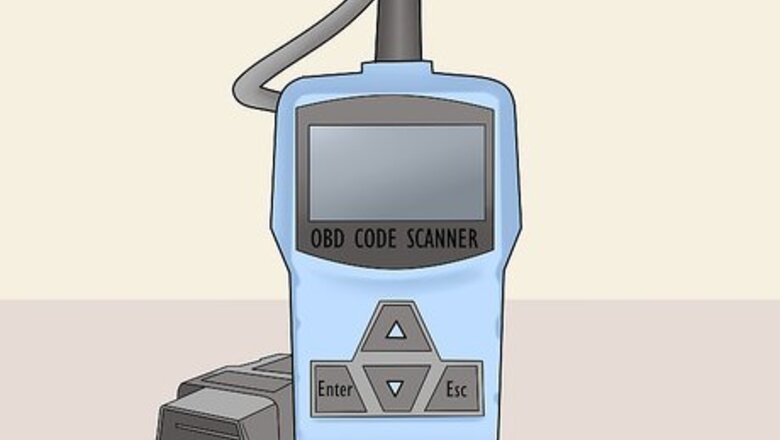
views
Finding the Error and Securing the Vehicle
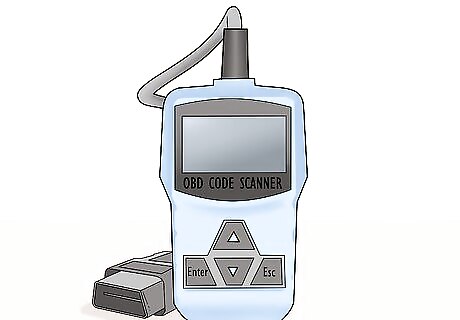
Use an OBD code scanner to detect the broken sensor. An OBD code scanner is a device that plugs into a port on the car’s dashboard. It retrieves an error code from the onboard computer, which shows you the reason for the check engine light. Each error code corresponds to a different part of the vehicle. You can buy a scanner online or at most auto parts stores. If you don’t have one, you could take your vehicle to an auto parts store or mechanic to have them detect the error code.

Let the engine cool before attempting to remove a sensor. The sensors are located along the exhaust system, which gets very hot when the vehicle is in use. Touching the engine, for instance, is dangerous. Turn the vehicle off and give it about 30 minutes to cool. If you need to touch a component before you are sure it is cool, wear protective gear. Have a heat-resistant glove, such as a welder’s mitt. Also, put on long-sleeved clothing and safety glasses for additional protection.
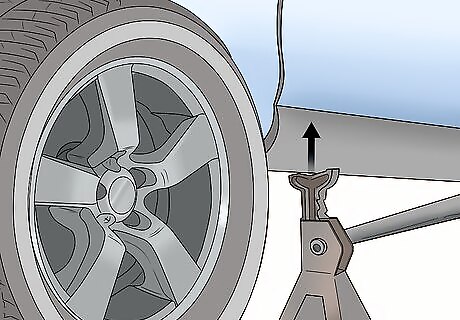
Jack up the vehicle if you need to reach a sensor under it. Park the car on a hard, flat surface. Prevent the wheels from moving by wedging chocks behind them. Then, slide a jack underneath one of the vehicle’s jack points. After lifting it up, place a jack stand there to keep the car elevated. Starting around 1994 and 1995, manufacturers started making vehicles with 2 oxygen sensors. The second sensor is only accessible by crawling underneath the vehicle. Lifting a car is dangerous, so make sure it is stable before looking for the sensor. If you aren’t comfortable working under a car, ask a mechanic for help.
Removing the Old Sensor
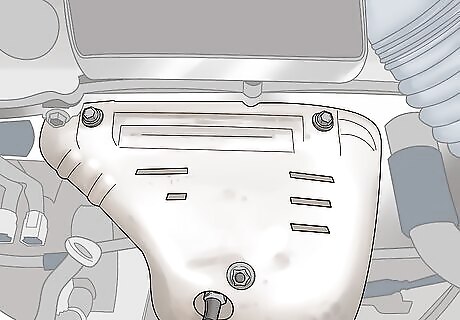
Locate the oxygen sensor underneath the hood or vehicle. Look for a part that looks like a spark plug with a thick, black cable coming out of it. The first sensor will always be next to the motor in the engine compartment. It will be on the exhaust pipe leading from the motor toward the back of the vehicle. Most cars these days also have a second sensor behind the catalytic converter, which looks like a metal cylinder on the exhaust line and is found right behind the front wheels. Most vehicles made after the year 2000 actually have 4 sensors. Each vehicle has 2 sensors near the motor and 2 near the catalytic converter.
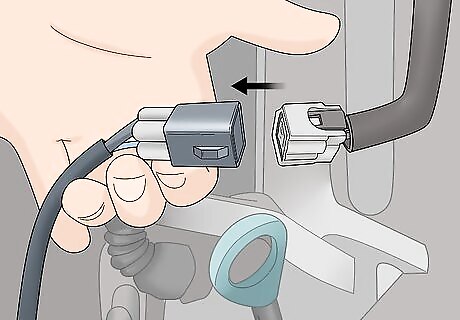
Disconnect the electrical connection to the oxygen sensor. Follow the cable away from the end of the sensor plugged into the exhaust line. It will end in a plastic plug inserted into an outlet. To remove it, locate the small tab on the end of the plug. While pushing the tab down, pull the plug back by hand. If you’re having a hard time unplugging the sensor wire, push the tab down with a flathead screwdriver as you pull the connection back with your free hand. Avoid attempting to cut and then solder the wires to the new oxygen sensor. With modern sensors, soldering causes the wires to stop working correctly.
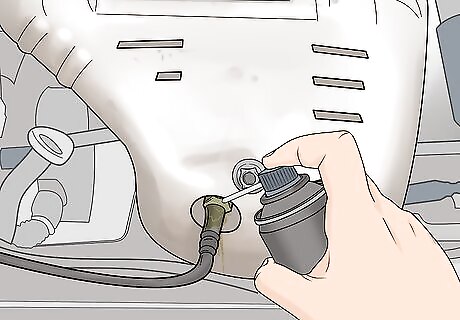
Spray some penetrating oil onto the sensor to loosen it. Worn-out sensors can be tough to remove, but a good penetrating oil helps ensure they come out. Add the lubricant to the opening where the sensor plugs into the exhaust line. Wait about 10 minutes for the oil to soak in before trying to unscrew the sensor. You may need to apply the oil a few times before you are able to get the sensor out. Another way to treat a stubborn oxygen sensor is to heat up its base and threads. Use a heat gun instead of a torch to lightly warm the sensor until you can remove it. A heat gun doesn’t have flames, so it’s safer than a torch, but be careful and protect yourself with proper safety gear.
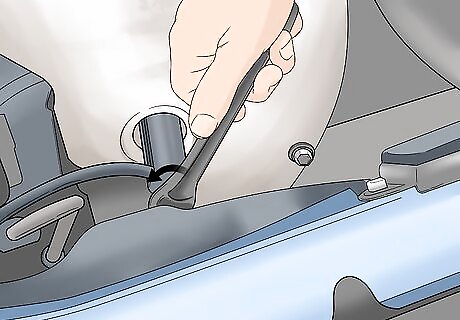
Unscrew the oxygen sensor using a ratchet wrench. The easiest way to detach the sensor is by using a ⁄8 in (0.95 cm) ratchet wrench fit with a ⁄8 in (2.2 cm) oxygen sensor socket. If you don’t have one, try using an open end wrench. Fit the wrench over the sensor where it plugs into the exhaust line. Turn it counterclockwise to loosen it, and then finish unscrewing it by hand. All of the tools you need are available online or at most auto parts stores. You could also check to see if your local auto parts stores has a tool rental program. If the sensor feels stuck in place, don’t force it. Apply more penetrating oil as needed to avoid damaging the vehicle. If it’s too tough to remove, take it to a professional.
Installing the New Sensor
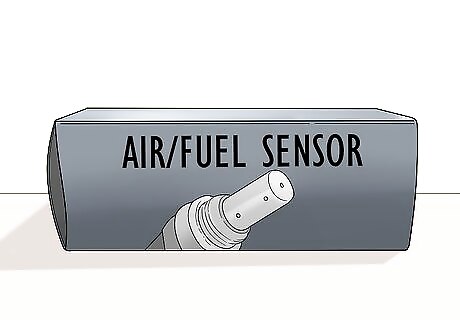
Select a new oxygen sensor that is the same as the old one. Use the make and model of your car to find the correct oxygen sensor. For example, search for a Toyota Prius to find the exact sensor used in a new Prius. Make sure the new sensor is the same size and shape as the old one. It should also be the same brand. You may find off-brand sensors at a cheaper rate, but avoid them for the sake of your vehicle. The only sensor model guaranteed to work with the vehicle’s onboard computer is the same one the manufacturer used. If you are able to, contact an auto parts store before attempting to change the sensor. You could also take the old sensor to a store if you can get a ride there.
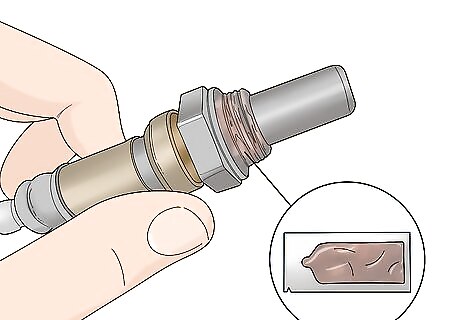
Add a small amount of anti-seize to the new sensor. New sensors come packed with a bag of bronze gel. You may be wondering what that strange goo is at first, but it’s a very important lubricant. Cut open the bag, then use a glove or clean rag to spread a small amount of the lubricant onto the new sensor’s threads. The threads are the grooves in the metal ring near the tip of the sensor. To avoid any problems with the anti-seize, wear a glove when applying it by hand. If you get it on your skin, it isn’t likely to harm you, but thoroughly wash your hands afterward. You do not need a lot of the gel. As long as you get some of it into the thread grooves, the sensor will fit properly in the exhaust line.
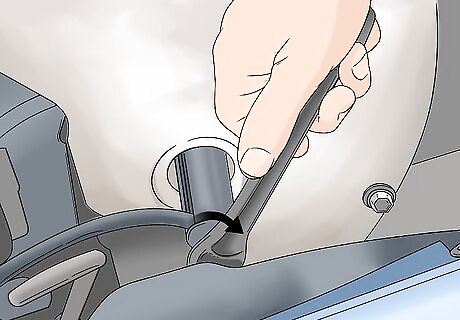
Turn the sensor clockwise to secure it on the exhaust line. Fit the tip of the sensor into the hole on the exhaust line. Make sure it is centered and goes in smoothly as you begin rotating it clockwise by hand. Once it is tightly in place, use an oxygen sensor socket or open end wrench to give it a final turn. The new sensor doesn’t have to be tightened as much as possible. In fact, overtightening the sensor could strip the threads, making it impossible to remove!
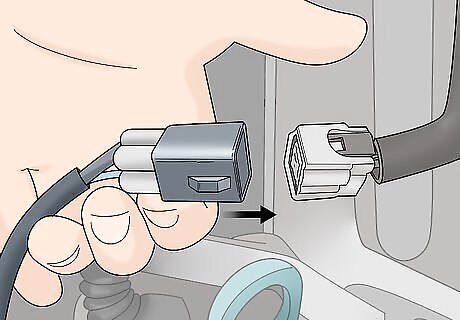
Plug the electrical connector back into the vehicle. Modern oxygen sensors come equipped with a connected electrical cable, so you don’t have to do any additional work. The cable will be hanging from the free end of the sensor. Plug it into the outlet port close to the exhaust line. Push the plug in until it snaps into place. Make sure the cable isn’t touching the engine or other parts that heat up when the vehicle is in use.

Start the car to see if the problem is fixed. The new sensor makes a big difference. It causes your vehicle to burn fuel more efficiently, It sounds better, runs more smoothly, and uses less fuel. If the check engine light was on, it most likely will turn off as well. Take the car out on the road to make sure it stays off. In some vehicles, you may need to clear the check engine light manually. Shut off the engine, then turn the car’s power on using the ignition key. Use the delete feature on an OBD code scanner to reset the light. Disconnect the battery or take the vehicle to a mechanic for additional ways to shut off the check engine light. If the check engine light comes back on, either the oxygen sensor wasn’t installed correctly or your vehicle has another problem.




















Comments
0 comment